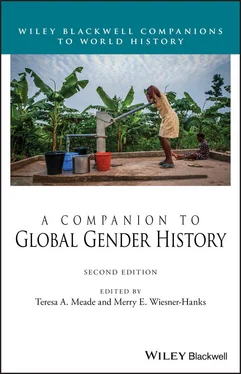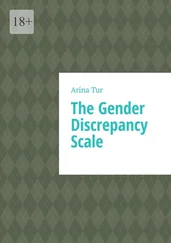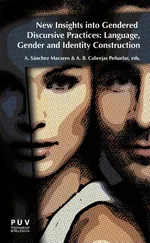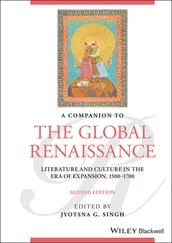The colonial encounter of Westerners and West Africans produced a series of misrecognition of actions and intentions based on the gendered worldviews of each respective party. Western concepts of gender map onto sexual difference, and assume a whole host of binaries, especially that of a public/private split for men and women; they often present relations between men and women as a battlefield from which one gender must necessarily emerge victorious, and regard victory in terms of privileges associated with masculinity in European and North American society. A historical ethnography of both the colonized and the colonizers reminds us that gender is not universal, natural, or static, but rather articulates meaning systems particular to each.
BIBLIOGRAPHY AND FURTHER READING
1 Bastian, Misty, Matera, Marc, and Kent, Susan Kingsley (2012) The Women’s War of 1929: Gender and Violence in Colonial Nigeria. Basingstoke: Palgrave Macmillan.
2 Beattie, Cordelia and Stevens, Matthew Frank, eds. (2013) Married Women and the Law in Premodern Northwestern Europe. Suffolk: Boydell Press.
3 Brown, Wendy (1988) Manhood and Politics: A Feminist Reading in Political Theory. Totowa, NJ: Rowman and Littlefield.
4 Caspi‐Reisfeld, Keren (2002) “Women Warriors during the Crusades, 1095–1254,” in Susan B. Edgington and Sarah Lambert, eds. Gendering the Crusades. New York: Columbia University Press, 96–97.
5 Clark, Anna (1997) The Struggle for the Breeches. Gender and the Making of the British Working Class. Berkeley: University of California Press.
6 Colley, Linda (1992) Britons: Forging the Nation, 1707–1837. New Haven, CT: Yale University Press.
7 Erickson, Amy Louise (1993) Women and Property in Early Modern England. London: Routledge.
8 Hall, Kim F. (1995) Things of Darkness: Economies of Race and Gender in Early Modern England. Ithaca, NY: Cornell University Press.
9 Herbert, Eugenia W. (1993) Iron, Gender, and Power: Rituals of Transformation in African Societies. Bloomington: Indiana University Press.
10 Hunt, Lynn (1992) The Family Romance of the French Revolution. Berkeley: University of California Press.
11 Kann, Mark E. (1998) A Republic of Men: The American Founders, Gendered Language, and Patriarchal Politics. New York: New York University Press.
12 Kent, Susan Kingsley (1987) Sex and Suffrage in Britain, 1860–1914. Princeton: Princeton University Press.
13 Kent, Susan Kingsley (1999) Gender and Power in Britain, 1640–1990. London: Routledge.
14 Kent, Susan Kingsley (2009) Aftershocks: Politics and Trauma in Britain, 1918–1931. Basingstoke: Palgrave Macmillan.
15 Lacey, W.K. (1986) “Patria Potestas,” in Beryl Rawson, ed. The Family in Ancient Rome, New Perspectives. Ithaca, NY: Cornell University Press.
16 Leduc, Claudine (1992) “Marriage in Ancient Greece,” in Pauline Schmitt Pantel, ed. A History of Women in the West, Volume I: From Ancient Goddesses to Christian Saints. Cambridge, MA: Harvard University Press.
17 McNamara, JoAnn and Wemple, Suzanne F. (1977) “Sanctity and Power: The Dual Pursuit of Medieval Women,” in Renate Bridenthal and Claudia Koonz, eds. Becoming Visible: Women in European History. Boston: Houghton Mifflin.
18 Miescher, Stephan F., Manuh, Takyiwaa, and Cole, Catherine M. (2007) “Introduction: When Was Gender?” in Stephan F. Miescher, Takyiwaa Manuh, and Catherine M. Cole, eds. Africa After Gender? Bloomington: Indiana University Press.
19 Monter, E. William (2012) The Rise of Female Kings in Europe 1300–1800 New Haven, CT: Yale University Press.
20 Moore, Lindsay R. (2019) Women Before the Court: Law and Patriarchy in the Anglo‐American World, 1600–1800. Manchester: Manchester University Press.
21 Oyewumi, Oyeronke, ed. (2005) African Gender Studies: A Reader. New York: Palgrave Macmillan.
22 Pateman, Carole (1988) The Sexual Contract. Stanford: Stanford University Press.
23 Pitkin, Hannah Fenichel (1984) Fortune is a Woman: Gender and Politics in the Thought of Niccolo Machiavelli. Berkeley: University of California Press.
24 Prezzano, Susan C. (1997) “Warfare, Women, and Households: The Development of Iroquois Culture,” in Cheryl Claassen and Rosemary A. Joyce, eds Women in Prehistory: North America and Mesoamerica. Philadelphia: University of Pennsylvania Press, 88–99.
25 Rothschild, N. Harry (2008) Wu Zhao, China’s Only Woman Emperor. New York: Pearson.
26 Scott, Joan Wallach (1988) Gender and the Politics of History. New York: Columbia University Press.
27 Scully, Pamela and Paton, Diana, eds. (2005) Gender and Slave Emancipation in the Atlantic World. Durham, NC: Duke University Press.
28 Shahar, Shulamith (1983) The Fourth Estate: A History of Women in the Middle Ages. London: Methuen.
29 Shanley, Mary Lyndon (1979) “Marriage Contract and Society Contract in Seventeenth‐Century English Political Thought.” Western Political Quarterly 32, 79–91.
30 Smith, Bonnie G. (1989) Changing Lives: Women in European History since 1700. Lexington, MA: D.C. Heath.
31 Thomas, Tracy A. and Tracey Jean Boissseau, eds. (2011) Feminist Legal History: Essays on Women and the Law. New York: New York University Press.
32 Thomas, Yan (1992) “The Division of the Sexes in Roman Law,” in Pauline Schmitt Pantel, ed. A History of Women in the West. Volume 1: From Ancient Goddesses to Christian Saints. Cambridge, MA: Harvard University Press, 83–137.
33 Townsend, Camilla (2006) Malintzin’s Choices: An Indian Woman in the Conquest of Mexico. Albuquerque: University of New Mexico Press.
34 Tung, Jowen R. (2000) Fables for the Patriarchs: Gender Politics in Tang Discourse. Lanham, MD: Rowman & Littlefield.
35 Villaye, Maria Gigliola di Renzo (2016) Family Law and Society from the Middle Ages to the Contemporary Era. Berlin: Springer.
36 Weatherford, Jack (2010) The Secret History of the Mongol Queens: How the Daughters of Genghis Khan Rescued His Empire. New York: Broadway Books.
Chapter Six Race, Gender, and Other Differences in Feminist Theory
Deirdre Keenan,1 with Teresa A. Meade and Merry E. Wiesner‐Hanks
On January 21, 2017, the day after Donald Trump was inaugurated as the president of the United States, hundreds of thousands of people, mostly women, gathered in Washington DC for a protest, and millions more came together at hundreds of protests on all seven continents, including Antarctica. Altogether there were more than 400 demonstrations across the US and nearly 200 in other countries, the largest single‐day protest in the history of the United States and, possibly, the world. Scores of protesters wore pink “pussyhats” they or other crafters had made, the name taken from the resemblance of the top corners of the hats to cat ears, and in reference to Trump’s widely reported 2005 remarks that because he was a “star,” women would let him “grab ’em by the pussy.” Marchers also carried a huge range of angry, witty, heartfelt, and thoughtful signs, among which were many that referred to intersectionality, the concept that the nature of oppression is multiplicative rather than additive, and that no one identity – race, class, gender, sexual orientation, religion, ability, and so on – should be considered apart from other identities. In essence, one’s identity is always materialized in terms of, and by means of, all other identities.
The idea that multiple forms of oppression interact and combine was part of the thinking of feminist groups that emerged in the 1960s and 1970s, which is not surprising, as so many founders of women’s liberation had been active in the Civil Rights and anti‐Vietnam War movements, the latter both anti‐racist and anti‐imperialist. Socialist feminists expanded Marxist analysis of labor exploitation in production to examine paid and unpaid household labor, through which working‐class as well as wealthier men benefited from the unpaid work of their female family members. In addition, prosperous women benefited when they could hire poorer women – usually women of color and foreign born – for childcare and housecleaning. Even before the 1960s, black left feminists such as Louise Thompson Patterson wrote about the “triple exploitation” of race, gender, and class. Feminists of color analyzed what Fran Beal of the Third World Women’s Alliance termed the “double jeopardy” of being both black and female. In 1977, the black lesbian feminist Combahee River Collective asserted in a statement mostly written by Barbara Smith: “We are actively committed to struggling against racial, sexual, heterosexual and class oppression, and see as our particular task the development of integrated analysis and practice based on the fact that the major systems of oppression are interlocking. The synthesis of these oppressions creates the conditions of our lives.” (1983: 264) In 1989, the critical race theorist and feminist legal scholar, Kimberlé Crenshaw called this synthesis of oppression “intersectionality.” The concept and word slowly spread into other academic fields and, eventually, into public consciousness. From its roots in the women’s movement, intersectional feminism has always been activist, and now it has become a way that people describe themselves on their Facebook pages, Twitter or Tumblr posts, buttons, and T‐shirts. Many sport a quotation from Flavia Dzodan, a writer who lives and works in Amsterdam, taken from her 2011 blog post on Tiger Beatdown ( tigerbeatdown.com): “My feminism will be intersectional or it will be bullshit.”
Читать дальше












